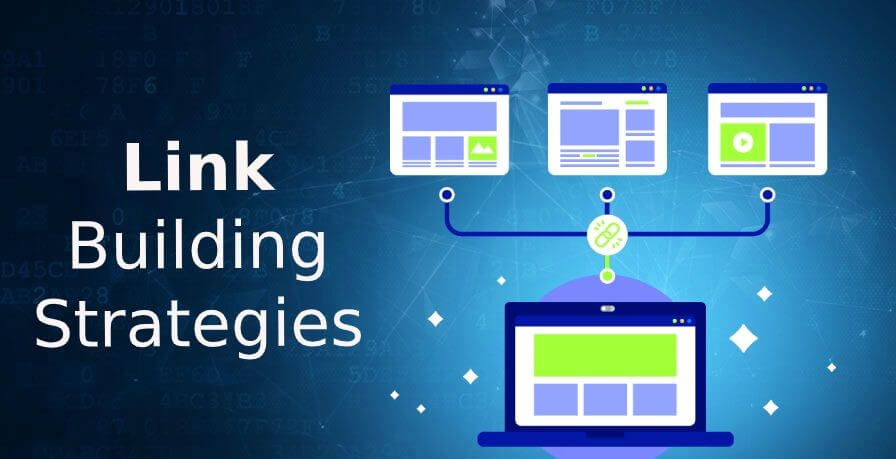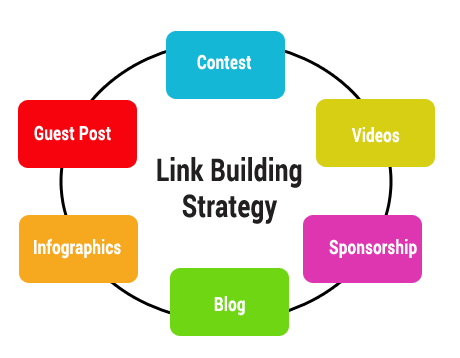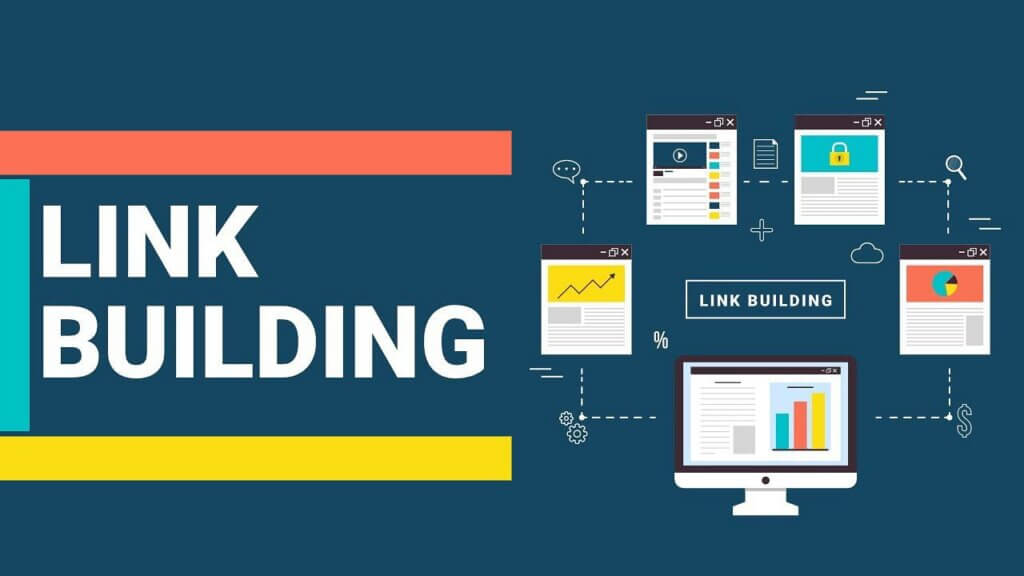Link Building Strategy
Introduction to Link Building Strategy
Link building is an essential aspect of search engine optimization (SEO) that involves acquiring links from external websites to your site. Links from high-quality websites to your site improve your site’s authority and credibility, increasing its chances of ranking higher in search engine results pages (SERPs). This article will discuss link-building strategy and its importance in SEO.
Definition of Link Building
Link building is acquiring hyperlinks from other websites to your website. Links are an essential ranking factor in search engine algorithms, and they are used to evaluate a website’s authority, relevance, and credibility. Link building can be achieved through various methods, including guest blogging, broken link building, infographic outreach, and resource page link building.
Importance of Link Building
Link building plays a crucial role in SEO, and it is essential for any website that wants to rank high in search engine results. Here are some reasons why link-building is necessary:
- Improves search engine ranking: Search engines use links to evaluate a website’s authority and relevance. Websites with more high-quality links are more likely to rank higher in SERPs.
- Increases website traffic: Links from other websites can drive traffic to your site, especially if they come from high-traffic websites.
- Builds brand awareness: Link building can help to increase your brand’s visibility and to understand online.
- Builds relationships: Link building involves reaching out to other websites and building relationships with site owners, which can lead to future collaborations and partnerships.
Types of Links
Link building is an essential aspect of search engine optimization (SEO) that involves acquiring links from external websites to your site. Links from high-quality websites to your site improve your site’s authority and credibility, increasing its chances of ranking higher in search engine results pages (SERPs). In this article, we will discuss the types of links that you can acquire through link building.
Natural Links
Natural links are links that you earn without any effort on your part. These links are given to your website by other websites because of the value of your content. Natural links are the most valuable because they come from reputable sources and are not manipulated in any way.
To earn natural links, you must create high-quality content that provides value to your target audience. When other websites find your content valuable, they will link to it naturally, increasing your website’s authority and relevance.
Manual Links
Manual links are links that you acquire by actively seeking them out. Manual link building involves outreach to other websites and request them to link to your site. Manual links can be valuable if they come from high-quality websites and are relevant to your content.
Manual link-building techniques include guest blogging, broken link building, and resource page link building. Guest blogging involves writing a blog post for another website in exchange for a link to your site. Damaged link building involves identifying broken links on other websites and contacting the site owners to request that they replace the broken link with a link to your site. Resource page link building involves finding relevant resource pages on other websites and asking that they add a link to your site.
Self-Created Links
Self-created links are links you create, such as forum signatures, blog comments, and social media profiles. Self-created links are the least valuable because they are often low-quality and can be seen as spammy by search engines.
While self-created links can be easy to acquire, they can also harm your website’s reputation if they are overused or misused. It is essential to use self-created links sparingly and only in relevant contexts.
Link building is an essential aspect of link building SEO strategy that involves acquiring links from external websites to your site. There are three types of links that you can achieve through link building: natural links, manual links, and self-created links. Natural links are the most valuable, while self-created links are the least useful. It is essential to focus on acquiring high-quality links relevant to your content and avoid using spammy link-building techniques that can harm your website’s reputation.
Link Building Techniques
Link building is a crucial part of search engine optimization (SEO) that involves acquiring links from external websites to your site. This article will discuss the various link-building techniques you can use to improve your website’s authority and credibility.
Guest Blogging
Guest blogging involves writing a blog post for another website in exchange for a link to your site. Guest blogging is an effective way to build high-quality backlinks and increase your website’s visibility and authority. To succeed with guest blogging, you must identify websites relevant to your niche and have high domain authority. You must also create high-quality content that provides value to the website’s target audience you are guest blogging for.
Broken Link Building
Broken link building involves identifying broken links on other websites and contacting the site owners to request that they replace the broken link with a link to your site. Damaged link-building is an effective technique because it provides value to the website owner by helping them fix a broken link and providing a link back to your site.
To be successful with broken link building, you need to identify websites that are relevant to your niche and have broken links on their pages. You also need to create high-quality content that can replace the broken link.
Resource Page Link Building
Resource page link building involves finding relevant resource pages on other websites and requesting that they add a link to your site. Resource pages are pages on websites that provide links to other relevant websites and resources. Resource page link building is an effective way to build high-quality backlinks and increase your website’s visibility and authority.
To successfully build resource page links, you must identify websites with relevant resource pages and create high-quality content relevant to the listed resources.
Skyscraper Technique
The skyscraper technique involves finding popular content in your niche and creating a better and more complete version. Once you have made your content, you reach out to the websites linked to the original content and request that they relate to it instead.
The skyscraper technique is an effective link-building technique because it provides value to the website owner by providing them with better content to link to and a link back to your site.
Infographic Outreach
Infographic outreach involves creating an infographic that provides value to your target audience and reaching out to relevant websites, and asking them to share your infographic on their site. Infographic outreach is an effective way to build high-quality backlinks and increase your website’s visibility and authority.
To succeed with infographic outreach, you must create a high-quality and visually appealing infographic that provides value to your target audience. You must also identify websites relevant to your niche and with high domain authority.
Link building is an essential aspect of SEO that involves acquiring links from external websites to your site. There are various link-building techniques that you can use to improve your website’s authority and credibility, including guest blogging, broken link building, resource page link building, skyscraper technique, and infographic outreach. To be successful with link building, you need to create high-quality content that provides value to your target audience and identifies websites that are relevant to your niche and have high domain authority.
Link Building Best Practices
Link building is an essential aspect of search engine optimization (SEO) that involves acquiring links from external websites to your site. While link building can effectively improve your website’s authority and credibility, following best practices to avoid penalties from search engines is essential. In this article, we will discuss the best practices for link building.
Create high-quality content
One of the most essential link-building best practices is to create high-quality content that provides value to your target audience. When you make high-quality content, other websites are more likely to link to your site, which can improve your website’s authority and credibility. High-quality content can help improve your website’s search engine rankings, increasing traffic.
Use anchor text strategically.
Anchor text is the clickable text that appears in a hyperlink. Using anchor text strategically can help improve your website’s search engine rankings. However, it’s essential to use anchor text in moderation and avoid using exact match anchor text excessively, as search engines can see this as spammy.
Focus on quality over quantity.
Regarding link building, it’s essential to focus on quality over quantity. Acquiring a few high-quality links from relevant and authoritative websites can be more effective than acquiring many low-quality links from irrelevant and spammy websites.
Diversify your link portfolio.
Another best practice for link building is to diversify your link portfolio. This means acquiring links from various sources, including guest blogging, broken link building, resource page link building, and infographic outreach. Diversifying your link portfolio can help improve your website’s authority and credibility, reducing the risk of penalties from search engines.
Monitor your backlink profile.
It’s essential to regularly monitor your backlink profile to ensure that you are not acquiring spammy or low-quality links. Tools like Google Search Console and Ahrefs can help you monitor your backlink profile and identify any issues that need to be addressed.
Build relationships with other websites.
Building relationships with other websites in your niche can be an effective way to acquire high-quality links. This can involve reaching out to other website owners and influencers in your place, engaging with them on social media, and collaborating on content.
Link building is an essential aspect of SEO that can help improve your website’s authority and credibility. However, it’s necessary to follow best practices to avoid penalties from search engines. By creating high-quality content, using anchor text strategically, focusing on quality over quantity, diversifying your link portfolio, monitoring your backlink profile, and building relationships with other websites, you can create a solid link-building strategy that improves your website’s search engine rankings and drives more traffic to your site.
Measuring Link Building Success
Link building is an essential aspect of search engine optimization (SEO) that can help improve your website’s rankings and drive more traffic. However, it’s necessary to measure the success of your link-building efforts to determine whether your strategy is working effectively. This article will discuss the best practices for measuring link-building success.
Define your goals
Before you can measure the success of your link-building efforts, you need to define your goals. This can include increasing your website’s search engine rankings, driving more traffic, improving your website’s authority and credibility, or generating more leads and conversions. By defining your goals, you can track your progress and determine whether your link-building efforts have the desired effect.
Track your backlink profile.
One of the most effective ways to measure the success of your link-building efforts is to track your backlink profile. This involves monitoring the number and quality of links pointing to your site. Tools like Ahrefs, Majestic, and Moz can help you track your backlink profile and identify any issues that need to be addressed.
Monitor your website’s search engine rankings.
Another way to measure the success of your link-building efforts is to monitor your website’s search engine rankings. This can involve tracking your website’s position in the search engine results pages (SERPs) for relevant keywords and phrases. Tools like Google Search Console and SEMrush can help you monitor your website’s search engine rankings and identify any improvements or declines.
Analyze your website’s traffic.
Link building can also help drive more traffic to your website. By analyzing your website’s traffic, you can determine whether your link-building efforts increase website visitors. Tools like Google Analytics can help you track your website’s traffic and identify any changes in traffic patterns.
Monitor your website’s authority and credibility.
Link building can also help improve your website’s authority and credibility. By monitoring your website’s domain authority and trust flow, you can determine whether your link-building efforts have the desired effect. Tools like Ahrefs and Majestic can help you monitor your website’s authority and credibility and identify any issues that need to be addressed.
Analyze your conversion rate.
Finally, link building can help generate more leads and conversions for your website. You can determine whether your link-building efforts increase conversions by analyzing your website’s conversion rate. This can involve tracking your website’s conversion rate for specific landing pages or marketing campaigns.
Measuring the success of your link-building efforts is essential for determining whether your strategy is working effectively. By defining your goals, tracking your backlink profile, monitoring your website’s search engine rankings, analyzing your website’s traffic, monitoring your website’s authority and credibility, and analyzing your conversion rate, you can measure the success of your link-building efforts and make adjustments as needed to improve your website’s search engine rankings and drive more traffic to your site.
Conclusion
Link building is an essential component of any effective SEO strategy. By building high-quality links to your website, you can improve your website’s search engine rankings, drive more traffic, and establish your site’s authority and credibility in your industry.
There are many types of links that you can build, including natural links, editorial links, outreach links, and social media links. Each kind of link has its benefits and challenges, and it’s essential to understand which links are most effective for your specific goals.
There are also many link-building techniques that you can use to build high-quality links to your website, such as guest blogging, broken link building, infographics, and resource pages. You can maximize your results and reach a wider audience by incorporating various link-building techniques into your strategy.
To ensure the success of your link-building efforts, it’s essential to follow best practices such as focusing on quality over quantity, avoiding spammy link tactics, building relationships with other websites in your industry, and providing valuable content that people want to link to.
Measuring the success of your link-building efforts is also crucial to improving your strategy and achieving your goals. By tracking your backlink profile, monitoring your website’s search engine rankings, analyzing your website’s traffic and conversion rates, and monitoring your website’s authority and credibility, you can determine whether your link-building efforts are practical and make adjustments as needed.
Link-building is a vital aspect of any successful SEO strategy. By understanding the different types of links, incorporating various link-building techniques, following best practices, and measuring your success, you can improve your website’s search engine rankings, drive more traffic, and establish your authority and credibility in your industry.
F.A.Q
What’s the most common link-building strategy?
The most common link-building strategy is outreach link building, also known as manual link building. This involves identifying relevant websites in your industry or niche and contacting them to request a link back to your site. This strategy typically involves creating valuable content that other websites will likely link to, such as blog posts, infographics, or resources. It requires significant effort and time, but it can be highly effective in building high-quality, natural backlinks to your site.
How do you run a link-building strategy?
Running a successful link-building strategy involves several steps:
- Set goals: Define your link-building goals, such as improving your search engine rankings, increasing traffic to your site, or establishing your site as an authority in your industry.
- Identify opportunities: Conduct research to identify potential websites and sources for building backlinks, such as industry blogs, news sites, social media platforms, and directories.
- Create valuable content: Develop high-quality content that is informative, engaging, and relevant to your target audience. This can include blog posts, infographics, videos, and other media types.
- Reach out to websites: Contact website owners and editors to request a link back to your site. Be sure to personalize your outreach emails and provide value to the website in exchange for the link.
- Monitor results: Keep track of your link-building efforts and monitor your website’s search engine rankings, traffic, and backlink profile. Use this data to evaluate the effectiveness of your strategy and make adjustments as needed.
- Build relationships: Building relationships with other websites in your industry is essential to successful link building. Be sure to engage with other website owners and editors, share their content, and provide value to their audiences to establish mutually beneficial relationships.
- Follow best practices: Follow ethical and best rules for link building, such as avoiding spammy tactics, focusing on quality over quantity, and providing valuable content to your audience.
By following these steps and staying committed to your link-building strategy, you can effectively build high-quality, natural backlinks to your site, improve your search engine rankings, and drive more traffic to your website.
What is a link-building strategy?
A link-building strategy is a planned approach to acquiring high-quality backlinks to a website from other relevant and authoritative websites. The primary goal of a link-building plan is to improve the website’s search engine rankings and drive traffic to the site.
A link-building strategy typically involves identifying relevant websites and sources for building backlinks, creating valuable content that other websites are likely to link to, and contacting website owners and editors to request a link back to the site.
Many links and link-building techniques can be used in a link-building strategy, including outreach link-building, guest blogging, broken link-building, and social media links. A successful link-building process requires significant effort, time, and planning, and it must follow ethical and best practices for link-building to ensure long-term success.








